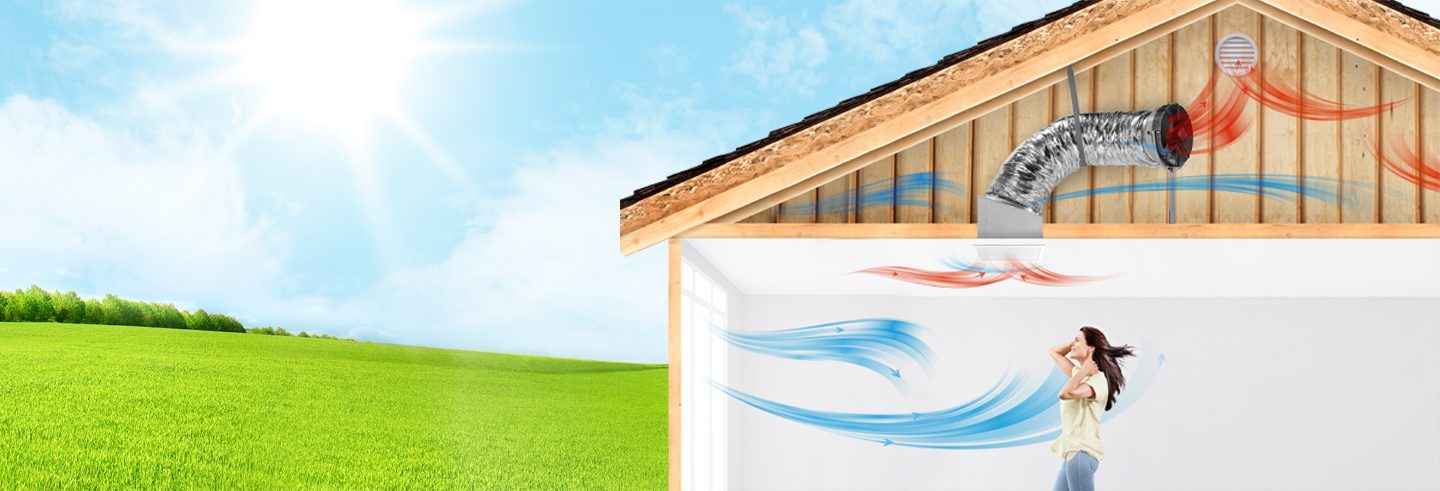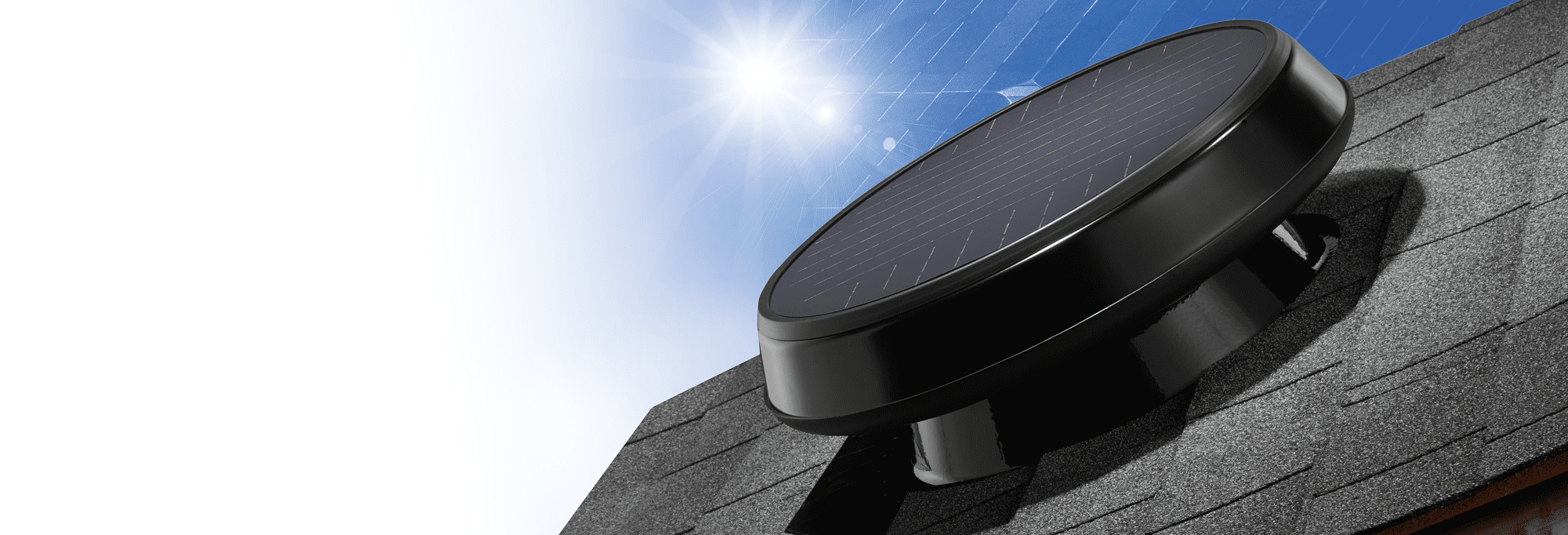What Fan Is Right for Your Home?
When it comes to keeping your house cool during the summer months, or year-round for that matter, your top priorities are ensuring that you not only have a cool home but that you have one in an energy-efficient way. There are several options you have here, but two of the most popular and effective options in this category are whole house fans and attic fans. Both of these are useful, but some homeowners make the mistake of treating them interchangeably. Let’s go over the key differences.

Whole House Fans
Starting off the conversation with whole house fans, this is a great way to improve the overall airflow in your home. A whole house fan sits in the ceiling of your home and pulls hot air out of the home by forcing it into the attic space. It then draws the air out through vents within the attic space and roof. By creating negative pressure inside the home, cool air is drawn in through the windows. Your average whole house fan will go through around 30 to 60 air changes per hour based on your floor plan as well as the fan that you choose.
By using this cooling option, you get a variety of different benefits. For example, instead of relying on manufactured cool air, like when you use coolant with an air conditioner, you can use natural cool air from the outdoors. This also gives you the opportunity to draw in more fresh air from outside, making the whole house more comfortable. Meanwhile, you’re sending stale air out through the attic. This definitely adds to the overall ambiance of your living area, especially when hosting guests.
You may be a bit confused about whether or not a whole house fan system can really replace an air conditioning unit. It depends, but it is possible. For those who live in mild climates where the temperature generally stays below 82 degrees, it is certainly possible. In addition, it can be a viable alternative for older homes where it may be difficult or cost-prohibitive to install a central air conditioning system. Whether or not you’re using this type of home ventilation system with the help of an air conditioner, you’re going to be creating a much more energy-efficient home.

Attic Fans
By comparison, attic fans in San Diego are installed in the roof. Rather than regulating the air inside of a house, it focuses on the air specifically inside the attic and pulls the hot air from the attic through the attic vents. Have you ever thought that a cooler attic can mean a cooler home? Well, it’s true. By using an attic fan that runs during the hottest parts of the day and stops when it is cooler outside, you can reap a variety of different benefits.
The first is supporting your home’s HVAC system by maintaining heat buildup in the attic. Roofing materials tend to absorb sunlight, which means an attic can be as much as 30 degrees hotter than the outside air. That’s a seriously hot situation sitting right above your living space. While cooling can be accomplished passively with vents, these fans take attic ventilation to the next level.
Note that if you are planning on adding an attic fan, there are some additional considerations that you need to make. For example, because the fans pull air from the attic while bringing in cooler air from the outside, it’s essential that you take a look at the vents prior to installation and make sure they aren’t blocked.
You also need to ensure that any air conditioning ductwork that you add is properly sealed from the attic. That way, the AC system doesn’t have to work as hard to cool the attic and the rest of the home at the same time. In addition, if you need to add attic vents prior to installing your fan, it’s recommended that you do 2-4x the normal area of your attic vents. This translates to around a square foot of vent space per every 750 cubic feet per minute of your fans capacity.
For more information on which fan may be right for your home, contact our experts. Our team can be reached in the San Diego and South Orange County area at 619-319-9426 and Los Angeles and North Orange County at 323-886-2271.
